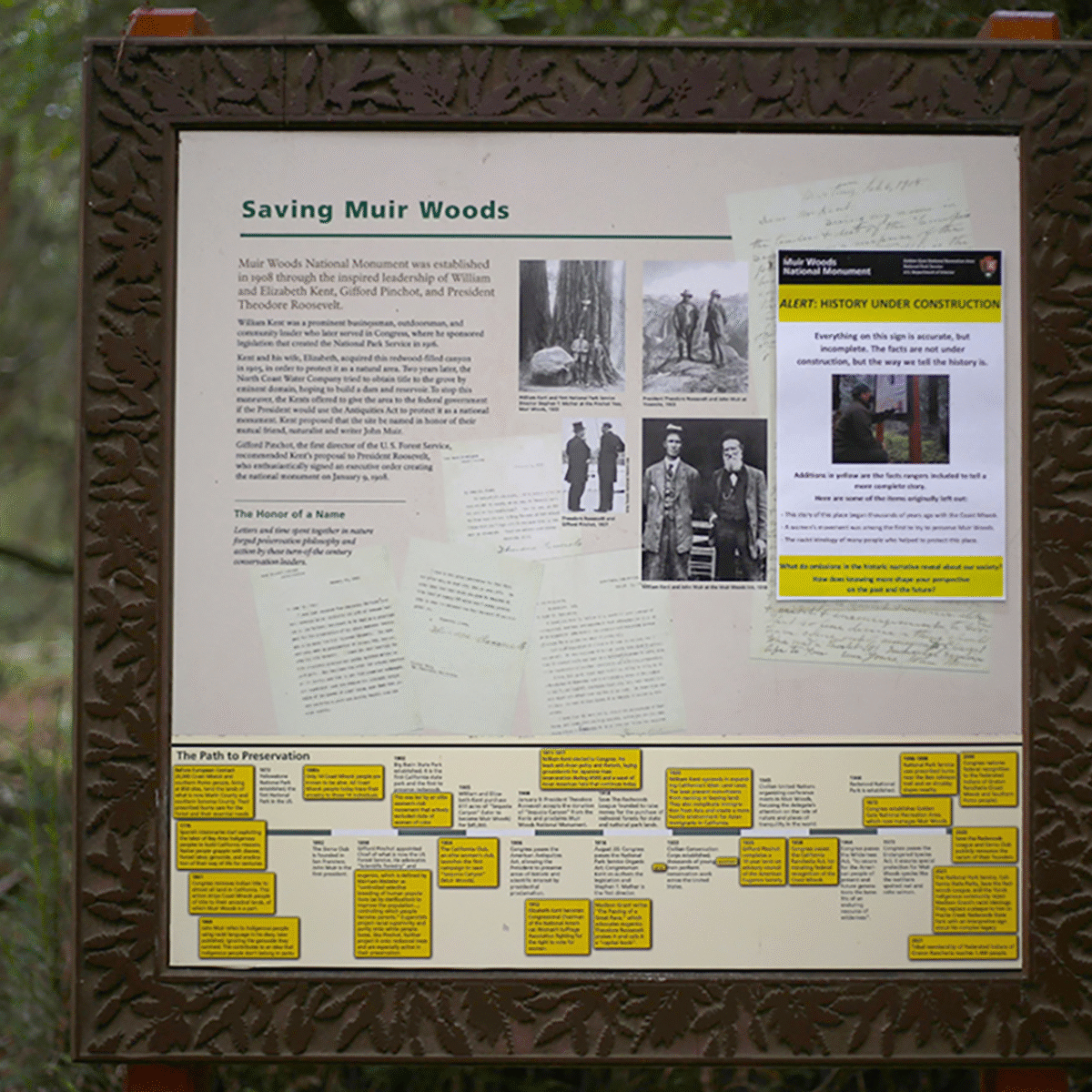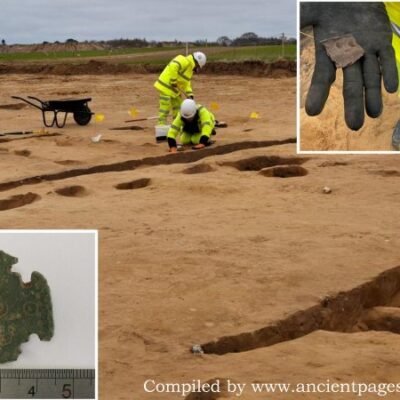In a statement to the New York Times, a spokesperson for the Golden Gate National Recreation Area, Joshua Winchell, confirmed that last week Muir Woods staff had removed sticky notes that were added to existing signage in 2021. These notes were accompanied by a poster explaining the staff’s aim “to tell the full story” of Muir Woods — for example, by acknowledging the role of Native American stewardship in the redwoods’ history.
“The stories protected at our national parks bring us closer together as a country, not further apart,” said Alan Spears, senior director for cultural resources at the National Parks Conservation Association, in a statement emailed to KQED. “Our history is complex, and as national park advocates, we trust national park staff to navigate those complexities and do their jobs without interference.”
“Great countries don’t hide from or sanitize their history,” Spears said.
Here’s what you need to know about the signs, why they were removed and what’s happening at other national parks across the country.
What was removed at Muir Woods and why?
The now-removed sticky notes at Muir Woods were part of a 2021 exhibit called “History Under Construction” developed by park rangers at the national monument.
As an accompanying poster — also now removed — explained, staff made the sticky note additions to the existing signage in an effort to add context to the park’s history, highlighting the foundational roles of women and Indigenous people in its creation and the oftentimes racist and violent past of its more notable founders.

“This sign credits influential, philanthropic white men with saving Muir Woods,” the poster read. “While they undoubtedly contributed to the forest becoming a national monument, part of our duty in the national parks service is to tell the full story of how that happened.”
“Everything on this sign is true but incomplete,” the poster read.
In particular, the sticky notes pointed out founder Gifford Pinchot’s ties to the American Eugenics Society, John Muir’s use of racist language against Indigenous people in his writing and Congressman William Kent’s work on legislation that targeted Asian immigrants.
What was in the executive order around materials in national parks?
In March, Trump issued an executive order, called “Restoring Truth and Sanity to American History,” which took aim at what the White House called a “distorted narrative” that Trump claimed was permeating the United States’ national parks, monuments and other federal institutions like the Smithsonian.
“Under this historical revision, our Nation’s unparalleled legacy of advancing liberty, individual rights, and human happiness is reconstructed as inherently racist, sexist, oppressive, or otherwise irredeemably flawed,” Trump wrote.

The Trump administration also instructed staff at national parks to publicly post signs with QR codes inviting visitors to themselves report any signage they found to “inappropriately disparage Americans past or living.”
The order then gave parks a deadline: By mid-July, they had to flag any materials for possible editing or removal, which the Trump administration said it would carry out by Sept. 17, according to the New York Times.
The order stated that Secretary of the Interior Doug Burgum would review materials “within the Department of the Interior’s jurisdiction” for “improper partisan ideology” and then take action to ensure they did not “contain descriptions, depictions, or other content that inappropriately disparage Americans past or living (including persons living in colonial times).”
Many cultural and outdoor organizations swiftly decried the order, including the American Historical Association and the Sierra Club. Some visitors, too, used the opportunity to criticize the administration’s order — or praise parks staff — rather than flag parks content for removal.
So what happened at Muir Woods?
Muir Woods officials did not respond to KQED’s request for comment. But Golden Gate National Recreation Area spokesperson Winchell said the sticky notes had been removed last week pending a review following the executive order.





